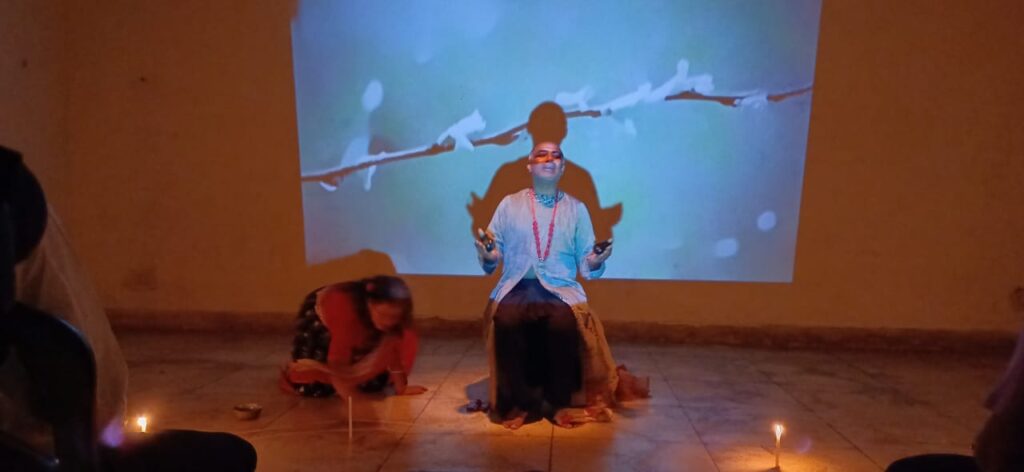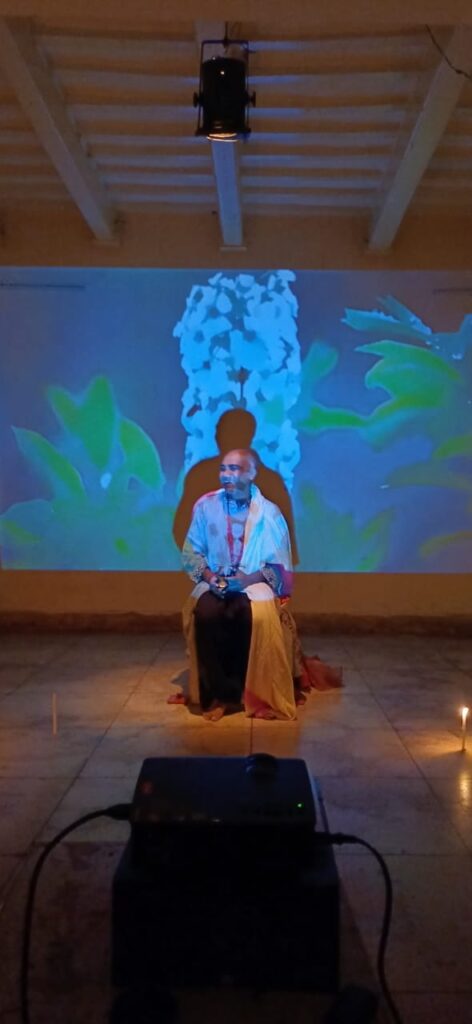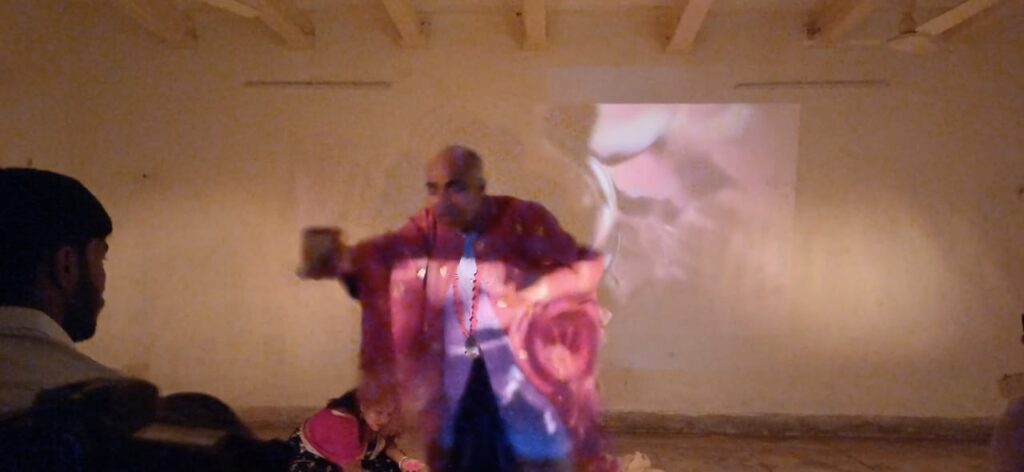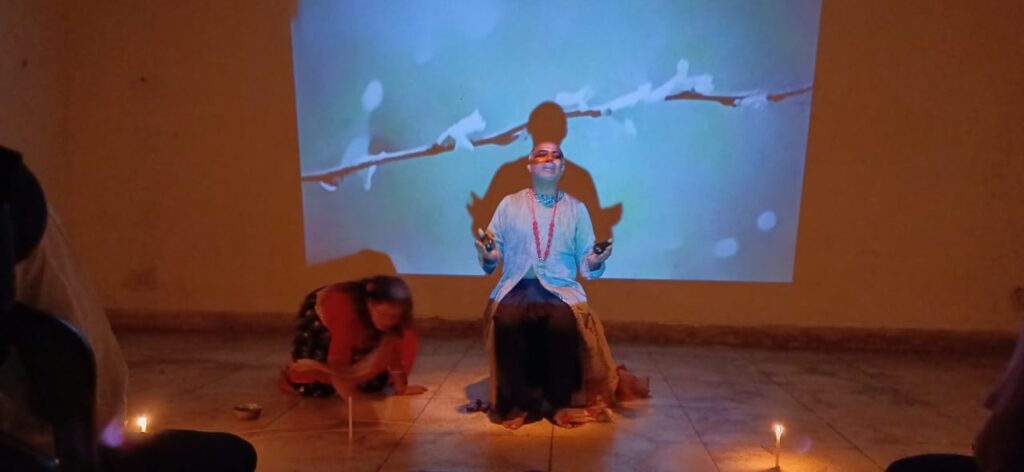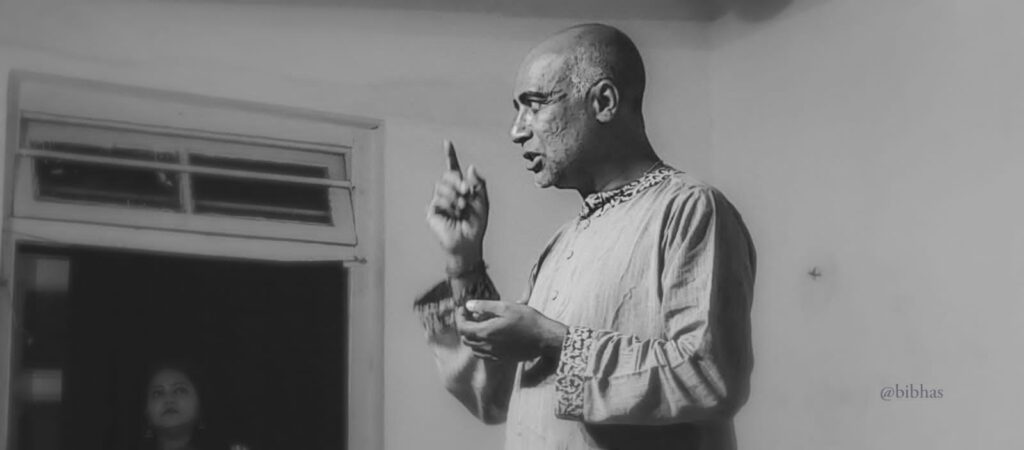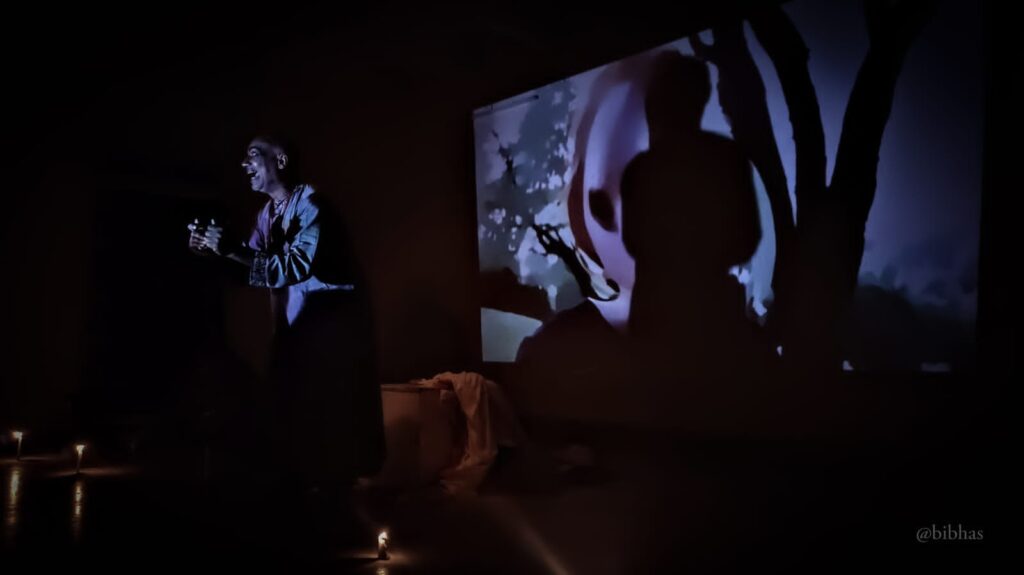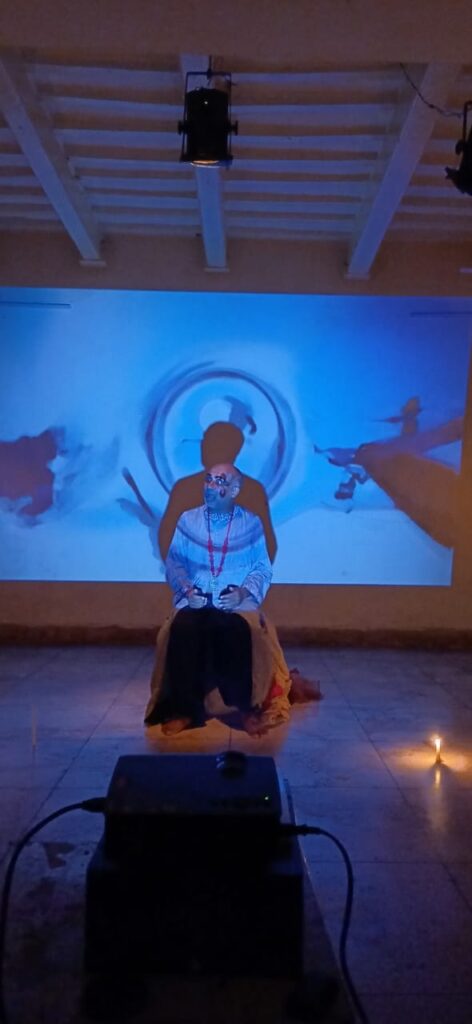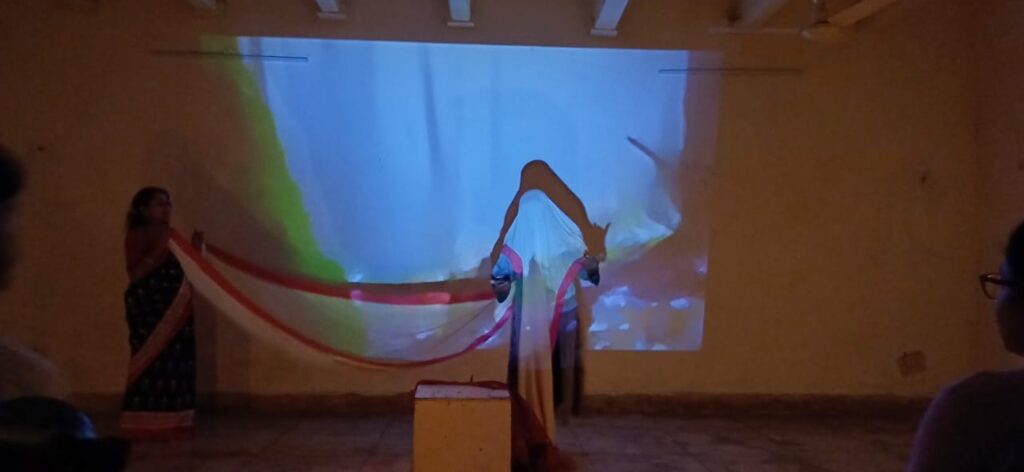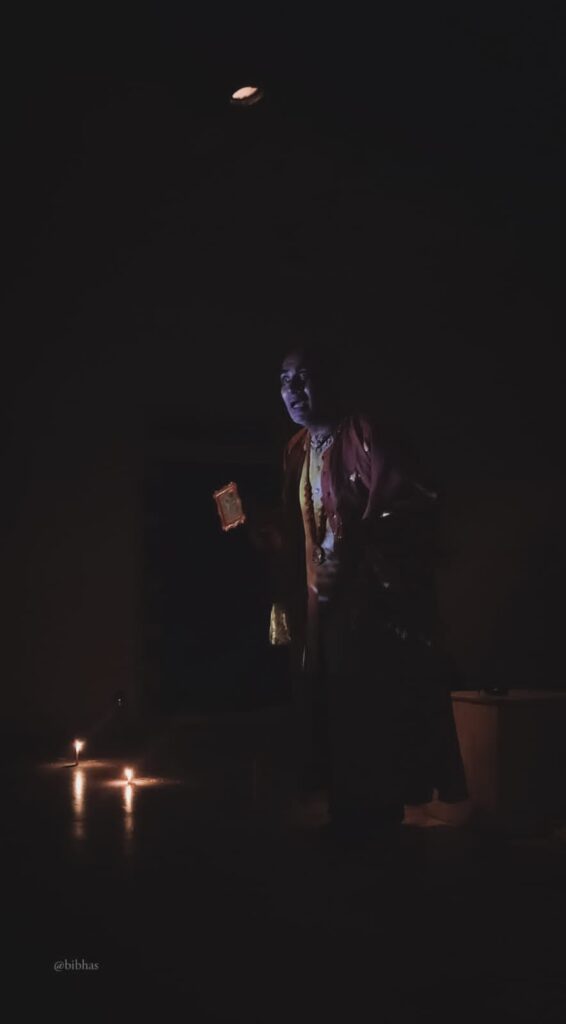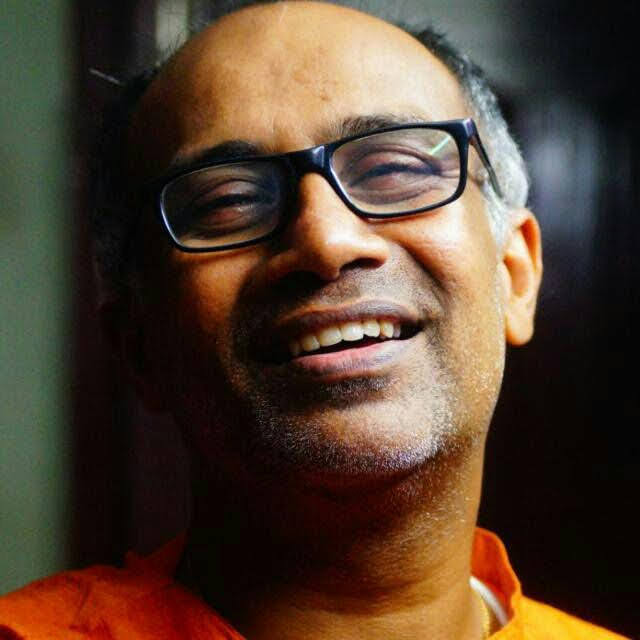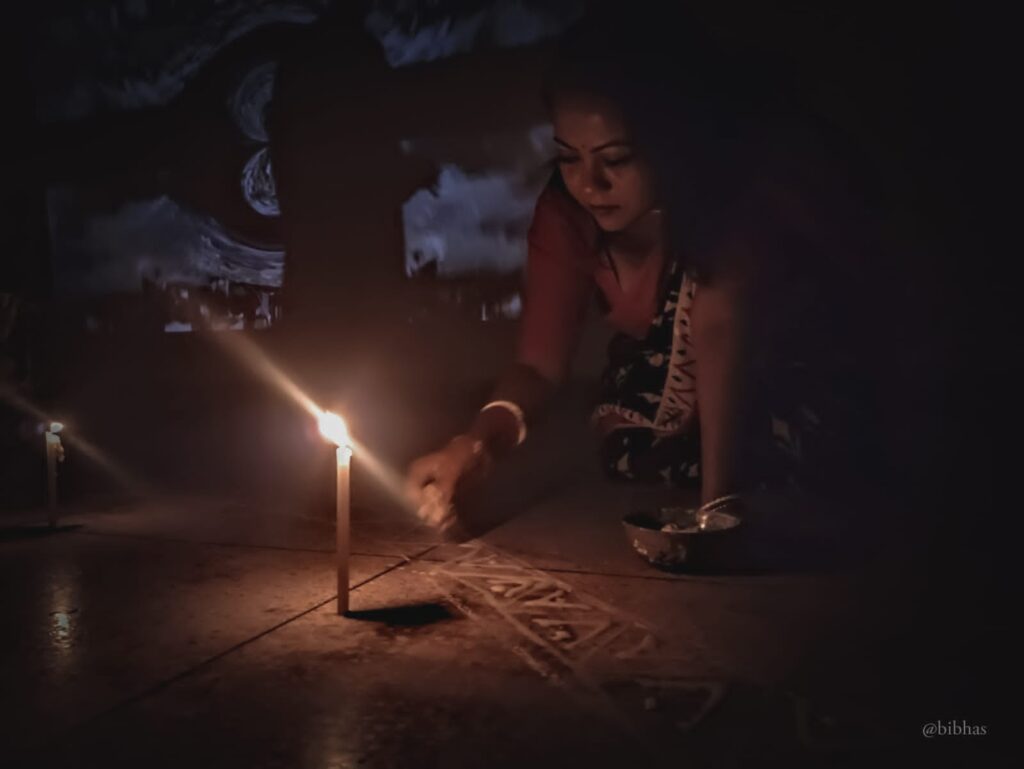RAMAYANA: FRACTURED, FIXED AND FORETOLD Oglam Presentation- Janardan Ghosh’s Narration.
The Concept:
Ramayana has been told and retold over centuries but the difference lies in the way it is reiterated. Not with the perception of recounting a tale but with an intent to reinvent it to unleash the hidden secrets of this unbound narrative we attempt to retell again and again taking the artistic liberty that it affords timelessly to revisit it with an innovative perspective. The project is an enterprise to endorse the epic as a narrative that is much ahead of its times in its intrinsic potential to dislodge our linear interpretations of this colossal tale as a religious account of Hinduism. The endeavour is to re-evaluate the learn by rote method through which we have perpetually studied this epic; any change in the script is a larger than life or a utopian idea. In a country like India where the myth goes beyond the circumference of the story and becomes a ‘sacred tale,’ to conceive certain alterations in the script is a indeed a formidable venture. Yet, this redoubtable interpretation on our part has been an outcome of our humble initiative of making the narrative appear different and hence more thought- provoking as it raises questions on the fundamental aspects of human existence without tampering with the organic theme in a unique way. The Ramayana is fractured, fixed and foretold for an audience of today that’s intelligent enough to accept variations in established Literature if it offers food for thought. This differently abled understanding of the epic cognitively sheds light on the of presence of the elements that demystifies the glory of this mythological narrative making it a poignant tale of a King’s sacrifice, struggle and his confrontation with the ultimate evil that is insurmountably challenging. Accompanying him is the divine feminine- the motherly prakriti, his consort whose worthiness being questioned every moment despite her inevitability in life is a tragic disclosure. When Nature is so serene and comforting, why do we exploit her? Is the question that resounds in every chant of the story teller who happens to have taken the onus of narrating the epic his own way without letting the cliche notions of propriety affect him. It is the kathavachna tradition that comes to the fore in the process wherein the kathavachak tries his level best to arrest the attention of the spectators who have gathered around him to witness his ability of telling a tale fascinatingly.
The alterations made in the tale are the result of an adaptation of the epic on which it is based. Nonetheless, the fact remains that these changes are made to inspire a generation of listeners to re-read the epic with an open mind without being influenced by the halo of divinity that revolves around it. This performance is towards giving Ramayana a form and shape that traverses the boundaries of conventions, religions and even Nations becomes a tale of global reality that surrounds human existence today. Our utilitarian approach towards nature, her exploutation under the garb of progress and development are universally undeniable truths that prevail in this tale of a magnanimous King who readily sacrificed everything in his life. His tales of heroism that prevail in our memory must not be confined to the deeds of valour but beneath there lies a purpose – to make the realization that the victory of good over evil comes with a price to pay. Divine Prakriti is insulted, hurt when the divine masculine shows his worthiness ascertains his valour and she ultimately chooses a silent retreat into the oblivion. Ramayana is indeed fractured at this juncture but the fact remains that it has to be fixed and again told for the generations to come and the Kathakar takes up this responsibility. Everything we see is an illusion, it is just a dramatization of a popular tale but it aims at restructuring and reframing our often erroneous understanding of the tale as synonym of dictation of certain principles. It is therefore that often every time the tale adopts a new form and incidents do not coincide with the actual epic. Shoorpanakha becomes Mareecha and Sita Swayamvar takes place after the exile of Rama and Laxmana in the forest; only to make us comprehend that the kathakaar’s choice to tell a tale remains uninterfered which opens up newer possibilities of engendering a CREATIVE PIECE- retold with a purpose: to enlighten. This is Ramayana – Fractured, fixed and foretold.
The Performative aspect:
The finer aspects of the kathakar’s( Janardan Ghosh’s) stage presence are intrinsically interwoven in the tale so inseparably that his gait, the gestures, the postures the expressions all depict a conceptual assertion of the Ramayana. The fluidity of the narration is indelible and the intonation is deliberately controlled to suit the parameters of excellent dialogue delivery which ought to have a thunderous proclamation of the epic coupled with a subtle yet effective volume that’s verbose and yet aptly restrained. There is a performative glory inseparably blended with the musical beats of a folk rendition that invites the onlookers to participate in the performance. The Kathakar’s splendid stage presence with his enormous voice modulations make the characters live in stage; needless to say- male or female. There’s a quaint androgyny that Janardan Ghosh establishes on stage with his one man army – himself who appears as a reservoir of actors essaying different roles evocative of the Bahurupi artists that are used to playing diverse roles and yet one at a time. Slow and steady wins the race is the strategem that the Kathakaar deliberately adopts when he narrates simultaneously playing varied roles- Rama, Sita, Shurpanakha and above all the colossal Ravana. The entry of Ghosh defines folk narration that’s charming endearing and at the same time prudent in its discretion of becoming stern when the narration becomes the somber from the recreational. It is a folk teller whose telling of the tale exploiting all the assets of performative aspect become more than conspicuous. He cries and groans and shouts and screams and laughs and proclaims and sits and stands and jumps and circumambulates the stage as if capturing it from all its directions. Yet he releases the stage equally well and comes back to himself as he knows the tale will speak for itself. The brilliance of a learned actor becomes visible in Ghosh’s choice to be Indian in his compassionate and anxious mannerisms of flourishing a folk tale of his nation and yet intellugebtly global in his approach towards narrating it objectively putting up a universal concern: Eco feminism. A subject matter of relevance for all across ages, Sita… a woman of education he so confidently he says and ends it so poignantly saying and in the end she immersed herself in the earth. And we automatically question ” Why? Why do we hurt her – the one who nurtures us so fondly? The divine feminine. Ghosh brings the ties together: Of Sita’s separation from Rana and of her being deserted in the end: Both are aligned. Whether she got accidently separated from him when Ravana abducted her or when he sent her away, in both cases, she is the sufferer. The performative narration impresses upon re-reading the epic independent of the notions of divinity attached to it.
Dr. Payal Trivedi
For comments( if any) please use the comment box given below.
